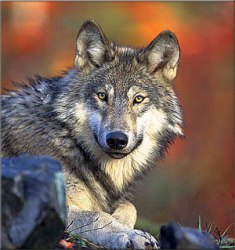There are several species in Indian wolves and each of them has something special which is worth noticing. Be it the genetics of the Indian wolf, their appearance, adaptation, and their place in the popular culture, read our guide to know more intere
Although the Indian wolf was considered as the sub-category of the Iranian Wolf (known as Canis lupus pallipes), new researches point out that the Indian wolves have possibly their own sub-category. Thus the Indian wolf obtained a scientific name Canis indica which indicates that it is one of the distinct species of wolf. The same is the story with the Himalayan wolves which are also found in India and were earlier categorized under Tibetan wolf (known as Canis lupus laniger). The interesting fact to be noted is that the Indian wolves have not cross-bred with other wolf species, thus making them a unique breed. Research which was initiated by B. H. Hodgson, a British naturalist, state that the Indian wolf and also Himalayan wolf, unlike the gray wolf, has not cross-bred for as long as 400,000 years.
Classification of the Indian Wolves
Independent research has indicated many varied concepts related to the taxonomy of the Indian wolves. For instance, W. T. Blanford who was also a British naturalist claimed that the modern Indian wolf is quite different from the earlier species, Canis lanige. He gave name to the modern Indian wolf as Canis pallipes which was smaller in size, had thinner and shorter winter coat apart from having smaller teeth and skull than their ancestors. The reports of this research also concluded that the Himalayan wolves are a subspecies of the Gray wolf.
The confusions were sorted out when R. I. Pocock, a British taxonomist submitted proof that both Indian wolf and the Himalayan wolf are different subspecies of Gray wolf. The Indian wolf was named as C.lupus pallipes while the Himalayan wolf became the C.lupus laniger. Research did not stop with this and presently, the Himalayan wolf is included with the Eurasian Wolf (known as C.lupus lupus) rather than using its unique subspecies name C.lupus laniger. It is to be understood that the binomial names and subspecies names are subject to change when more research is conducted and the genetic data are interpreted.
Identifying the Indian Wolves
The typical reddish, buff, or tawny colored fur is considered as the characteristic physical feature of the Indian wolves. They are usually 60-95 centimeters in height and weigh typically between 18-27 kilograms. The adaptability of the Indian wolves is impressive as they live in the hot and the semi-arid pastoral environments whereas most of their cousins habitat in grasslands and scrublands. They can be commonly found in the Indian states, namely, Rajasthan, Gujarat, Haryana, Madhya Pradesh, Uttar Pradesh, Andhra Pradesh, Maharashtra, and Karnataka. Though Indian wolves are protected as endangered species, the human-animal conflict causes enough damage to both involved. The Indian wolves were depicted in many works of Rudyard Kipling, especially in the The Jungle Book.





